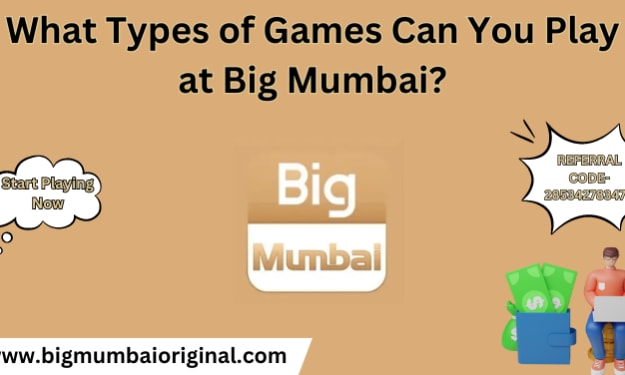Incorporating VR/AR Technology in Poker Game Development
AR/VR Poker Game Development

Virtual Reality (VR) and Augmented Reality (AR) technologies have revolutionized the gaming industry, providing immersive and interactive experiences. Poker game development can greatly benefit from the integration of VR and AR, enhancing player engagement, realism, and social interaction. In this blog post, we will explore the potential of VR/AR technology in poker game development and the benefits it offers to both players and developers.
Understanding VR and AR in Poker Game Development
Virtual Reality (VR): VR technology creates a fully immersive digital environment, transporting players into a virtual world. By wearing VR headsets, players can experience a realistic and interactive poker game, complete with 3D graphics, spatial audio, and intuitive hand tracking. VR technology enables players to physically interact with the virtual cards, chips, and other elements, enhancing the authenticity of the poker experience.
Augmented Reality (AR): AR technology overlays digital elements onto the real-world environment, blending virtual and real-world elements. In the context of poker game development, AR can be used to create an interactive and shared poker table on any flat surface, such as a table or the floor. Players can see virtual cards, chips, and other game elements overlaid on the physical environment through their AR-enabled devices, such as smartphones or smart glasses.
Read Also: Benefits of Playing Ludo Game Online
Benefits of VR/AR in Poker Game Development
Immersive Gameplay: VR/AR technology creates a heightened sense of immersion, allowing players to feel like they are sitting at a real poker table. The realistic graphics, spatial audio, and physical interactions with virtual objects make the gameplay more engaging and authentic.
Social Interaction: Poker is a social game, and VR/AR technology enhances the social aspect by enabling players to interact with each other in a virtual or augmented environment. Players can see and communicate with each other using voice chat or gestures, creating a more immersive and sociable poker experience.
Realistic Environments: VR/AR technology enables the creation of visually stunning and realistic poker environments. Players can enjoy playing poker in various virtual settings, such as luxurious casinos, tropical islands, or futuristic spaceships, adding novelty and excitement to the gameplay.
Training and Skill Development: VR/AR poker games can serve as valuable training tools for both new and experienced players. Players can practice their poker skills, learn strategies, and improve their decision-making abilities in a risk-free virtual environment. Real-time feedback and tutorials can further enhance the learning experience.
Accessibility: VR/AR technology makes poker more accessible to a wider audience. Players can enjoy the game from the comfort of their homes without the need to visit physical casinos. This accessibility factor increases convenience and broadens the player base.
Read Also: Top 10 Leading Online Poker Software Providers
Implementing VR/AR in Poker Game Development
Designing Engaging Virtual Environments: Develop visually appealing and immersive virtual environments that replicate real-world casino settings or introduce imaginative and captivating themes. Pay attention to lighting, textures, and spatial audio to enhance the sense of presence and realism.
Intuitive Interactions: Design intuitive and natural interactions with virtual cards, chips, and other game elements. Incorporate hand tracking, gestures, and haptic feedback to simulate the physical sensation of handling cards and chips, making the gameplay more immersive.
Multiplayer Functionality: Implement multiplayer functionality in VR/AR poker games to enable players to compete against each other in real-time. Foster social interactions by integrating voice chat and avatar customization features, allowing players to express themselves and communicate effectively.
Real-time Analytics and Feedback: Utilize VR/AR technologies to collect real-time gameplay data and provide feedback to players. Analyze player behavior, hand movements, and decision-making to offer personalized insights and suggestions for improvement.
Read Also: Top 10 Trending Online Poker Sites in India
Challenges and Considerations
Hardware Requirements: VR/AR experiences require specific hardware, such as VR headsets or AR-enabled devices. Developers need to consider the hardware limitations and ensure compatibility across different platforms and devices.
User Comfort: VR experiences can cause discomfort or motion sickness for some individuals. Implement comfort features, such as adjustable graphics settings, smooth locomotion options, and frequent breaks, to enhance user comfort and minimize adverse effects.
Development Expertise: Developing VR/AR poker games requires specialized knowledge and expertise in VR/AR technologies, game development, and user experience design. Collaborating with experienced VR/AR developers or investing in training and research is crucial for successful implementation.
Performance Optimization: VR/AR experiences demand significant computational power. Developers should optimize the game's performance to ensure smooth gameplay, reduce latency, and maintain high frame rates for an immersive experience.
Final Words
Incorporating VR/AR technology in poker game development opens up a world of possibilities, offering players a truly immersive, social, and realistic gaming experience. The benefits of VR/AR technology, such as immersion, social interaction, skill development, and accessibility, make it a compelling addition to the poker gaming landscape.
By designing engaging virtual environments, implementing intuitive interactions, and fostering multiplayer functionality, developers can create VR/AR poker games that captivate and entertain players. Overcoming challenges and considering user comfort, hardware requirements, and development expertise are essential for successful integration.
As VR/AR technology continues to advance, the future of poker game development holds exciting opportunities for innovative gameplay experiences, expanded player communities, and enhanced player satisfaction.
About the Creator
Akshay Bhatt
Experienced in Technical Content Writing.
Interested in Games, Anime, Movies, and Philosophy.
Demotivated Knowledge Whore
Enjoyed the story? Support the Creator.
Subscribe for free to receive all their stories in your feed. You could also pledge your support or give them a one-off tip, letting them know you appreciate their work.






Comments
There are no comments for this story
Be the first to respond and start the conversation.